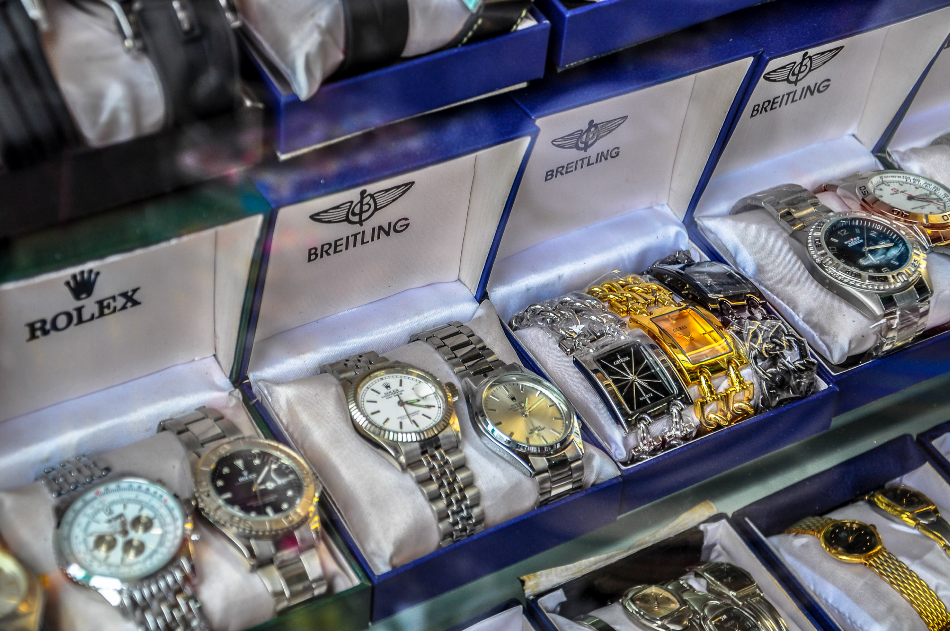A Swiss team of researchers have developed a technique to detect counterfeit watches using inductively coupled plasma mass spectrometry (ICP-MS), producing chemical profiles which classify watches into chemical groups, determining their authenticity.

ImageCredit/Shutterstock:Hkhtt Hj
The paper, published in Forensic Science International this month, details the method researchers believe has the potential to be upscaled, assisting the watch market in reducing the impact of counterfeits on revenue and reputation.
The growing watch counterfeit industry is robbing brands of revenue and consumer trust.
The counterfeit trade remains to be a huge problem within the international watch market. It is estimated that more than 40 million counterfeit Swiss watches enter the market each year, given that only 30 million originals are made, the counterfeit trade is a significant problem. Recent figures value the sales lost to the counterfeit market total around $618 million, equating to around 44% of the manufacturer's suggested retail price (MRSP) being lost to the counterfeit trade. The statistics signify that established and respected brands are losing a large portion of their potential revenue due to the sale of fake watches, and it is not only money they’re losing… Because consumers are largely unaware of their counterfeit purchase, (roughly 65% of customers are buying fakes unintentionally), brands are facing damage to their reputation as the low quality of fakes are being mistaken as authentic products.
With the evolution of the online marketplace, the counterfeit sector is thriving more than ever, increasing the significance of the problem. In fact, the Guardian reports that the rise of cyber-retail has helped to boost the entire counterfeit market, generating $590 billion in annual revenue. The main issue being buyers inability to determine fakes just from the images they see online, leading them to purchase products they believe look real, which are actually counterfeit but may still carry the retailer’s price tag. The Swiss research team have recognized the pressing need for a robust system detecting counterfeit watches, in order to tackle the counterfeit market and to protect customers and brands from the impact of fakes.
Developing a method of elemental analysis to classify chemical compositions.
The Swiss team set about creating a protocol whereby counterfeit products could be identified reliably using a robust scientific strategy. They recognized that the elemental composition between genuine and counterfeit watch cases would be significantly different due to different methods of production and distribution, with counterfeits leaving signature chemical traces behind.
The elemental composition of a total of 35 counterfeit watches was analyzed using ICP-MS to generate descriptive data regarding each watches signature composition. Using a multivariate statistical analysis of chemical results, researchers categorized the watches into chemical groups. After considering the effectiveness of several approaches, the team settled on hierarchical cluster analysis (HCA) as the most reliable for classifying the watch specimens into a total of 14 chemical classes.
The results reveal a new analytical technique for recognizing fakes.
The Swiss research team was successful in developing a new analytical technique for producing elemental compositions of watchcases that rely on the multivariate statistical analysis of chemical results, which classifies watches based on their origins, determining a watches authenticity.
The protocol that was developed is believed to have the potential to be upscaled and evolve into a standard test, being made accessible to various sections of the watch market.
A device to detect counterfeits would significantly impact the market.
Hopefully, the result of this study will lead to the development of a reliable application being used to reduce the number of counterfeits being sold unknowingly to consumers. Currently, more work needs to be done to evolve the method. The study used a limited number of samples (35 watches), therefore, a larger more comprehensive study needs to be conducted to corroborate and improve on what has initially been discovered. The primary results are promising, and it shows the potential of establishing a technique of chemical profiling for the fast and reliable recognition of counterfeit watches. The potential impact of such a device would be huge, given that 40 million counterfeit Swiss watches are entering the market each year. Working towards reducing this, would profoundly benefit authentic Swiss watch brands and their customers.
Source:
Hochholdinger, S., Marvin, L., Arnoux, M., Esseiva, P. and Delémont, O. (2019). Elemental analysis for profiling counterfeit watches. Forensic Science International, 298, pp.177-185. https://www.sciencedirect.com/science/article/pii/S037907381930088X
Disclaimer: The views expressed here are those of the author expressed in their private capacity and do not necessarily represent the views of AZoM.com Limited T/A AZoNetwork the owner and operator of this website. This disclaimer forms part of the Terms and conditions of use of this website.